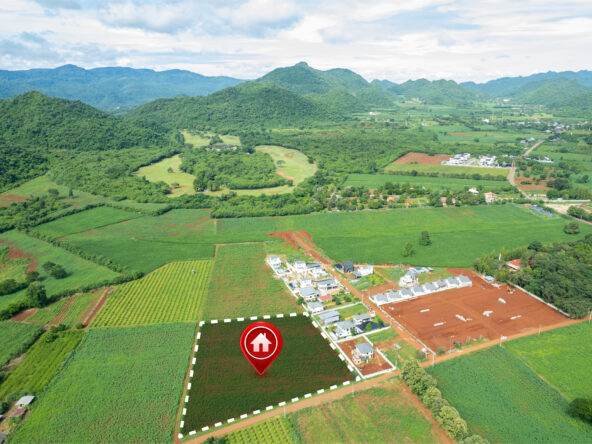Land ownership comes with a myriad of responsibilities and challenges, ranging from property management to advocating for your rights as a landowner. In the face of these challenges, many landowners find strength, support, and valuable resources through membership in landowner associations and networks. In this comprehensive guide, we will explore the world of landowner associations, understanding their significance, how to join them, and the multitude of benefits they offer.
I. Understanding Landowner Associations
Landowner associations exist at various levels, from local to national, and serve as vital platforms for collaboration, information sharing, and collective action among landowners. Let’s delve into the different types of associations, their common goals, and the perks they bring to the table.
A. Types of Landowner Associations
- Local Associations: Local landowner associations are grassroots organizations often focused on specific regions or communities. They bring together landowners who share common concerns related to local issues, such as zoning regulations, environmental conservation, or agricultural practices. Joining a local association allows landowners to connect with neighbors facing similar challenges and work collaboratively to find local solutions.
- Regional Associations: Regional associations broaden the scope, encompassing a larger geographical area. They often tackle issues that affect a broader range of landowners, such as watershed management, wildlife conservation, or regional land-use planning. Regional associations provide a platform for sharing knowledge and resources across diverse landscapes, fostering a sense of unity among landowners with varying interests and backgrounds.
- National Associations: At the national level, landowner associations tackle overarching issues, influencing policy, and advocating for landowners’ rights on a grand scale. These associations are instrumental in shaping legislation that affects land use, property rights, and conservation efforts nationwide. Joining a national association allows landowners to be part of a collective voice that can bring about impactful change and defend shared interests at the highest levels.
B. Common Goals and Objectives
Landowner associations, regardless of their scale, typically share common goals and objectives centered around:
- Conservation Efforts: Many landowner associations actively engage in conservation initiatives, promoting sustainable land management practices, protecting natural habitats, and addressing environmental concerns. Through collective action, these associations contribute to the long-term health and resilience of local ecosystems.
- Advocacy for Landowners’ Rights: Advocacy is a cornerstone of landowner associations. They champion the rights of landowners, ensuring their voices are heard in legislative processes. This can involve lobbying for fair property taxation, protecting water rights, or opposing regulatory measures that may negatively impact landowners.
- Educational Programs: Knowledge is power, and landowner associations recognize the importance of education. Many associations organize workshops, seminars, and training sessions to empower their members with the information and skills needed to navigate complex issues such as land management, legal matters, and environmental stewardship.
C. Benefits of Joining
The decision to join a landowner association is not just a commitment; it’s an investment in the well-being of your property and the broader community of landowners. Here are some key benefits:
- Networking Opportunities: Membership in a landowner association opens the door to a network of like-minded individuals. Networking events, meetings, and online forums provide valuable opportunities to exchange ideas, share experiences, and build connections with fellow landowners. This network can be an invaluable resource for advice, support, and collaboration.
- Access to Resources and Information: Landowner associations often serve as hubs of information. Members gain access to a wealth of resources, including research findings, best practices, and expert advice. Whether you’re looking for guidance on sustainable farming methods or seeking information on local conservation programs, being part of an association can significantly enhance your knowledge base.
- Collective Bargaining Power: There’s strength in numbers, and landowner associations leverage collective bargaining power to negotiate with stakeholders, policymakers, and other entities. Whether negotiating land prices, advocating for favorable regulations, or collaborating on large-scale conservation projects, the combined influence of association members can yield substantial benefits.
II. How to Find and Choose the Right Association
Finding and joining the right landowner association is crucial for maximizing the benefits you receive and ensuring alignment with your specific needs and goals. Let’s explore the steps to identify, evaluate, and ultimately join an association that suits you.
A. Researching Available Associations
- Online Resources: The internet is a treasure trove of information, and the first step in finding a suitable landowner association is to conduct thorough online research. Websites of agricultural extension offices, environmental organizations, and dedicated landowner association platforms can provide a list of associations operating in your region. Look for associations with a track record of addressing issues that resonate with your interests and concerns.
- Local Agriculture Offices: Local agriculture offices are often hubs of information about land use, conservation programs, and community initiatives. Visit or contact your local agriculture office to inquire about landowner associations in your area. Staff at these offices can provide valuable insights and recommendations based on their knowledge of local needs and priorities.
- Recommendations from Peers: Word of mouth is a powerful tool. Reach out to fellow landowners, neighbors, or colleagues who may have experience with landowner associations. Their firsthand experiences can offer valuable perspectives and help you identify associations that have a positive impact on the community.
B. Evaluating Association Suitability
- Aligning Goals and Values: Before committing to a particular association, assess whether its goals align with your values and objectives as a landowner. Consider the association’s mission statement, past achievements, and ongoing projects. Associations with a clear alignment with your values are more likely to provide the support and resources you need.
- Membership Requirements: Different associations may have varying membership requirements, such as property size, land use practices, or specific geographical locations. Ensure that you meet these requirements and that they match your situation. Some associations may have restrictions based on the type of land use, so be thorough in understanding the eligibility criteria.
- Services Provided: Examine the services and benefits offered by each association. Some may focus on advocacy and legal support, while others may emphasize educational programs or conservation initiatives. Choose an association that provides services relevant to your needs and complements your long-term goals as a landowner.
III. The Joining Process
Now that you’ve identified a suitable landowner association, it’s time to navigate the joining process. Becoming a member involves specific steps and considerations to ensure a smooth and fruitful integration into the association’s community.
A. Membership Application
- Necessary Documentation: Prepare the required documentation for the membership application. This may include proof of land ownership, identification documents, and any other information the association deems necessary. Thoroughly review the application guidelines to avoid delays in the process.
- Application Fees (If Any): Some landowner associations may have associated fees for membership or initiation. Understand the fee structure and payment process, and be prepared to cover any associated costs. Consider these fees as an investment in the benefits and resources the association provides.
B. Orientation and Training
- Introduction to Association Activities: Upon acceptance into the association, take advantage of orientation sessions to familiarize yourself with the organization’s structure, activities, and ongoing projects. Understanding the association’s history and objectives will deepen your connection and engagement with its mission.
- Educational Workshops and Events: Many associations organize workshops and events to educate members on various topics, from sustainable land management practices to legal considerations. Attend these sessions to enhance your knowledge and connect with other members who share similar interests.
IV. Making the Most of Membership
Becoming a member of a landowner association is not just a passive commitment; it’s an opportunity to actively engage with a community that shares your interests and concerns. Here’s how you can make the most of your membership:
A. Active Participation
- Attending Meetings and Events: Actively participate in association meetings, whether they are held locally, regionally, or nationally. These gatherings provide a platform for open discussions, idea exchanges, and updates on ongoing initiatives. Your presence contributes to the diversity of perspectives within the association.
- Contributing to Initiatives: Volunteer to contribute your time and skills to association projects and initiatives. Whether it’s participating in a conservation program, sharing your expertise in a workshop, or assisting with advocacy efforts, active involvement enhances both your personal experience and the overall impact of the association.
B. Utilizing Resources
- Accessing Educational Materials: Take full advantage of the educational resources provided by the association. This may include online materials, publications, and access to experts in various fields. Continuous learning not only benefits you as a landowner but also strengthens the collective knowledge base of the entire association.
- Taking Advantage of Networking Opportunities: Network with fellow landowners within the association. Attend networking events, engage in online forums, and build relationships with members who share similar interests or face similar challenges. The connections you make can lead to valuable insights, collaborative projects, and lasting friendships.
C. Building Relationships
- Connecting with Fellow Landowners: Building relationships with other landowners is one of the most significant benefits of association membership. Reach out to fellow members, share your experiences, and learn from theirs. Establishing connections with those who have diverse backgrounds and expertise can broaden your perspective and provide valuable support.
- Collaborating on Projects: Explore collaborative projects within the association. Whether it’s a community conservation effort, a research initiative, or a joint advocacy campaign, working with other landowners amplifies the impact of your efforts. Collaboration fosters a sense of unity and shared responsibility among association members.
V. Real-Life Success Stories
To illustrate the tangible benefits of landowner association membership, let’s explore a couple of real-life success stories where active participation led to positive outcomes for both individual landowners and the broader community.
A. [Case Study 1: Conservation Triumph]
In a local landowner association focused on watershed management, members collaborated on a comprehensive conservation plan. By pooling resources, implementing sustainable land practices, and advocating for responsible development, the association successfully preserved critical water resources and protected the habitat of several endangered species.
B. [Case Study 2: Advocacy for Landowners’ Rights]
Members of a national landowner association united to challenge proposed legislation that could have adversely affected property rights. Through coordinated advocacy efforts, including public awareness campaigns and engagement with policymakers, the association played a pivotal role in amending the legislation to better reflect the interests of landowners across the country.
VI. Overcoming Challenges
While landowner associations offer numerous benefits, challenges may arise along the way. Understanding and addressing these challenges is essential for a positive and impactful association experience.
A. Potential Hurdles
- Differing Priorities: Members may have diverse priorities and concerns. Navigating these differences requires open communication, compromise, and a shared commitment to the overarching goals of the association.
- Resource Constraints: Limited resources, whether financial or human, can pose challenges to the execution of association initiatives. Creative solutions, strategic partnerships, and efficient resource allocation are key to overcoming these constraints.
B. Strategies to Overcome Obstacles
- Effective Communication: Establish clear and transparent communication channels within the association. Regular updates, newsletters, and forums for discussion enable members to stay informed and engaged, fostering a sense of unity and purpose.
- Strategic Partnerships: Forge partnerships with other organizations, government agencies, or businesses that share common interests. Collaborative efforts can leverage additional resources and expertise, enhancing the association’s ability to achieve its objectives.




